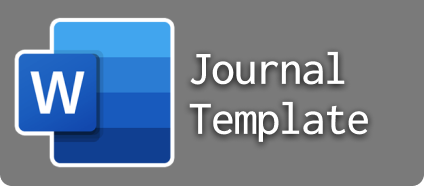SKRINING FITOKIMIA EKSTRAK ETANOL RUMPUT LAUT GRACILARIA SP. ASAL DESA NEUSU KABUPATEN ACEH BESAR
DOI:
https://doi.org/10.22373/amina.v2i1.418Keywords:
Gracilaria sp, Rumput Laut, Metabolit SekunderAbstract
Gracilaria, sp is one type of red algae that produces jelly. Gracilaria, sp. are easily found in Indonesian waters so that they can be developed as aquaculture businesses, especially alongside the east coast of Indonesia. Gracilaria sp. has a secondary metabolic bioactive compound that can be used as a source of emulsifiers, thickeners, stabilizers, and also as medicines. Therefore, phytochemical screening of secondary metabolite compounds, among others, alkaloids, flavonoids, saponins, and terpenoids was carried out. The results showed a positive phytochemical screening of flavonoid compounds, terpenoids, and saponins in the Gracilaria seaweed.
References
A. P. Wardana & Tukiran. (2016). Skrining Fitokimia dan Aktivitas Antioksidan Ekstrak Kloroform Tumbuhan Gowok (Syzygium polycephalum ). Prosiding Seminar Nasional Kimia Dan Pembelajarannya, (September), 21–26.
Anton. (2017). Pertumbuhan dan Kandungan Agar Rumput Laut (Gracilaria spp) Pada Beberapa Tingkat Salinitas. Jurnal Airaha, 6(2), 54–64.
E. Supriyantini, G. W. & Santosa, L. N. A. (2018). Pertumbuhan Rumput Laut Gracilaria sp. pada Media yang Mengandung Tembaga (Cu) dengan Konsentrasi yang Berbeda. Journal of Tropical Marine Science, 1(1), 15–22. https://doi.org/10.33019/jour.trop.mar.sci.v1i1.655
Lantah, P. L., Montolalu, L. A., & Reo, A. R. (2017). Kandungan Fitokimia Dan Aktivitas Antioksidan Ekstrak Metanol Rumput Laut Kappaphycus alvarezii. Media Teknologi Hasil Perikanan, 5(3), 73. https://doi.org/10.35800/mthp.5.3.2017.16785
Maharany, F., Nurjanah, Suwandi, R., Anwar, E., & Hidayat, T. (2017). Kandungan Senyawa Bioaktif Rumput Laut Padina australis dan Eucheuma cottonii Sebagai Bahan Baku Krim Tabir Surya. Jphpi, 20(1), 10–17. https://doi.org/10.17844/jphpi.2017.20.1.10
Pangestuti, I. E., & Amalia, U. (2017). Skrining Senyawa Fitokimia Rumput Laut Sargassum sp Dan Aktivitasnya Sebagai Antibakteri Terhadap Staphylococcus aureus dan Eschericia coli. Sainstek Perikanan, 12(2), 98–102.
Sangi, M., Runtuwene, M. R. J., & Simbala, H. E. I. (2008). Analisis Fitokimia Tumbuhan Obat Di Kabupaten Minahasa Utara. Analisis Fitokimia Tumbuhan Obat Di Kabupaten Minahasa Utara, 1(1), 47–53.
Setyowati, W. A. E., Ariani, S. R. D., Ashadi, Mulyani, B., & Rahmawati, C. P. (2014). Skrining Fitokimia dan Identifikasi Komponen Utama Ekstrak Metanol Kulit Durian (Durio zibethinus Murr) Varietas Petruk. Seminar Nasional Kimia Dan Pendidikan Kimia VI, 271–280.
Sharo, N. M., Ningsih, R., Hanapi, A., & Nasichuddin, A. (2013). Uji Toksisitas Dan Identifikasi Senyawa Ekstrak Alga Merah (Eucheuma cottonii) Terhadap Larva Udang Artemia salina Leach. Alchemy, 2(3). https://doi.org/10.18860/al.v0i0.2892
Manteu, S.H & Nurjanah, T. N. (2018). Karakteristik Rumput Laut Coklat (Sargassum policystum dan Padina minor) Dari Perairan Pohuwato Provinsi Gorontalo. JPHPI, 21, 397.
Simaremare, E. S. (2014). Skrining Fitokimia Ekstrak Etanol Daun Gatal (Laportea decumana (Roxb.) Wedd) Eva. PHARMACY, 11(01), 98–107.
Soamole, H. H., Sanger, G., Harikedua, S. D., Dotulong, V., Mewengkang, H. W., & Montolalu, R. I. (2018). Kandungan Fitokimia Ekstrak Etanol Rumput Laut Segar (Turbinaria sp., Gracilaria sp., dan Halimeda macroloba). Media Teknologi Hasil Perikanan, 6(3), 94. https://doi.org/10.35800/mthp.6.3.2018.21259
Soelistyowati, D. T., Ayu, I., & Dewi, A. (2014). Morfologi Gracilaria spp yang dibudidaya di tambak Desa Pantai Sederhana , Muara Gembong. Jurnal Akuakultur Indonesia, 13(1), 94–104.
Downloads
Published
Issue
Section
License
Amina Journal a uses license CC-BY SA
Amina Journal uses license CC-BY-SA or an equivalent license as the optimal license for the publication, distribution, use, and reuse of scholarly works.
This license permits anyone to compose, repair, and make derivative creation even for commercial purposes, as long as appropriate credit and proper acknowledgement to the original publication from Amina Journal is made to allow users to trace back to the original manuscript and author.
Readers are also granted full access to read and download the published manuscripts, reprint and distribute the manuscript in any medium or format.






















